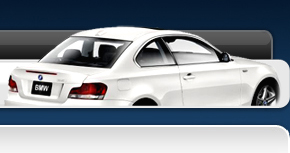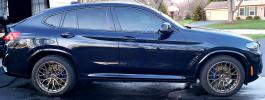


|
|
|
 |
| 05-23-2013, 05:11 PM | #1 |
|
New Member
0
Rep 6
Posts |
lack of momentum?
I've been driving the 135 (auto with DCT) for a couple of weeks now... it feels like it does not pick up much momentum- If I lift my foot off the accelerator, it comes to a stop pretty quickly.
is that normal? how do you feel about it? |
| 05-23-2013, 08:18 PM | #2 |
|
Spoolin' & droolin'

95
Rep 1,229
Posts |
Do you lift your foot off completely in less than a second and the engine feels like it does a CLUNK?
|
|
Appreciate
0
|
| 05-23-2013, 08:27 PM | #3 |
|
Major
 64
Rep 1,267
Posts
Drives: AW 135i
Join Date: Aug 2012
Location: Waterford, Mi
|
Its a progressive throttle design, not a linear one. So as you push your foot down, it exponentially opens. You can change this with the right tuning software.
|
|
Appreciate
0
|
| 05-23-2013, 08:56 PM | #4 |
|
Brigadier General
 732
Rep 3,274
Posts |
Yeah I feel like there's a lot of "engine braking" going on. Like when you're going down a hill and the gearing keeps you from rolling out of control, but also on flat roads it seems to slow down the car a lot more than I notice on other cars. I think it's the throttle design as @Stohlen mentioned. It's normal.
__________________
2022 X4 M40i - 2008 135i - 2015 F700GS On Order - 2024 i4 M50 Scruffy's gonna die the way he lived... Mmhm.  |
|
Appreciate
0
|
| 05-23-2013, 09:08 PM | #5 |
|
Brigadier General
 126
Rep 3,099
Posts |
it's called compression braking
totally normal. has nothing to do with the throttle, and it's not exponential, it's linear voltage. |
|
Appreciate
0
|
| 05-23-2013, 10:23 PM | #6 | |
|
Private
 
3
Rep 60
Posts |
Quote:
|
|
|
Appreciate
0
|
| 05-24-2013, 01:04 PM | #8 |
|
Captain
    
80
Rep 655
Posts |
Not sure if this is what he meant, but here I go:
In a "traditional" automatic transmission, there is a torque converter that sits between the engine and the transmission. This is usually a viscous (liquid) coupling that relies on a compressor and a turbine to transfer power from the engine to the transmission and still allow the engine to idle. If the engine spins faster than the transmission (ex. you're on the throttle), the compressor accelerates the liquid which drives the turbine and thus spins the output shaft to the transmission. Conversely, if the engine spins slower than the transmission (ex. when you're slowing down/lift the throttle), not enough pressure is built in in the compressor, thus the liquid does not drive the turbine and effectively disconnects the engine from the transmission. Since the process is fluid based, it's very smooth and gentle and also very progressive. With a Dual-clutch transmission, there are - as the name implies - two actual clutch plates connected to two pressure plates. Your car's computer controls the connection between the clutches and decides which should be engaged at any given time. When you slow down a DCT car, the clutch is still 100% connected to the engine, thus you are experiencing the same engine braking that a manual transmission driver would (up to a point where the computer prevents stalling by actuating the clutch). That's the principal difference between the two systems and why they might feel different to you. Again, hope that's what "CC" meant to say  |
|
Appreciate
0
|
| 05-24-2013, 02:15 PM | #9 | |
|
Lieutenant Colonel
 
118
Rep 1,668
Posts |
Quote:
__________________
Enjoying an E89 Z4, F30 320i and Fiat Abarth //
E85 Z4 (sold), E82 128i (sold), Fiat Pop 500 (sold) |
|
|
Appreciate
0
|
| 05-24-2013, 02:25 PM | #10 |
|
Loves his G20
265
Rep 2,507
Posts |
I agree, I would have no idea how to even start explaining all that.
__________________
 2020 330ix-Msport Past- 2013 135i 2011 135i |
|
Appreciate
0
|
| 05-24-2013, 04:03 PM | #11 | |
|
New Member
0
Rep 6
Posts |
Quote:
|
|
|
Appreciate
0
|
| 05-24-2013, 05:03 PM | #12 | |
|
Private
 
3
Rep 60
Posts |
Quote:
 |
|
|
Appreciate
0
|
Post Reply |
| Bookmarks |
|
|